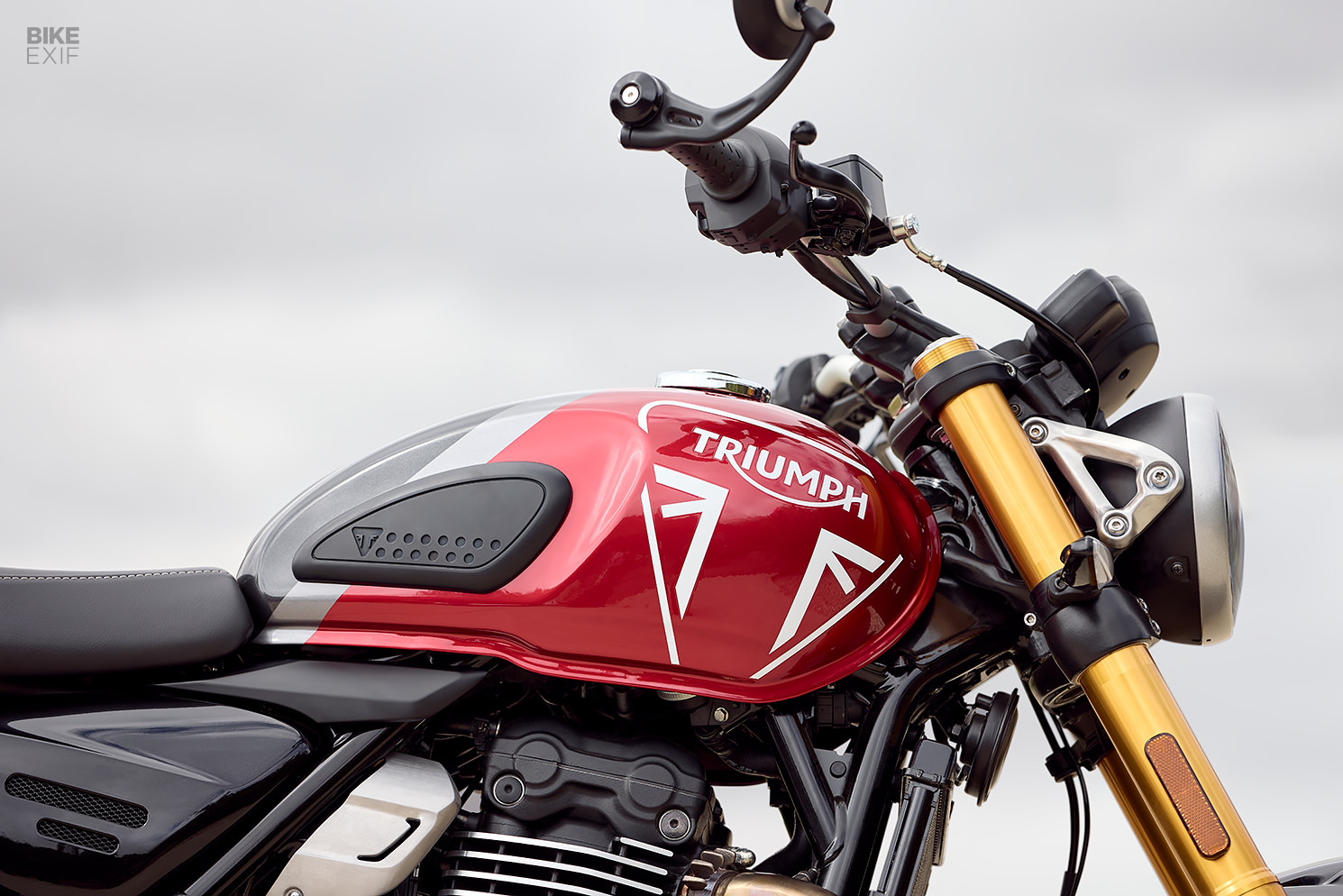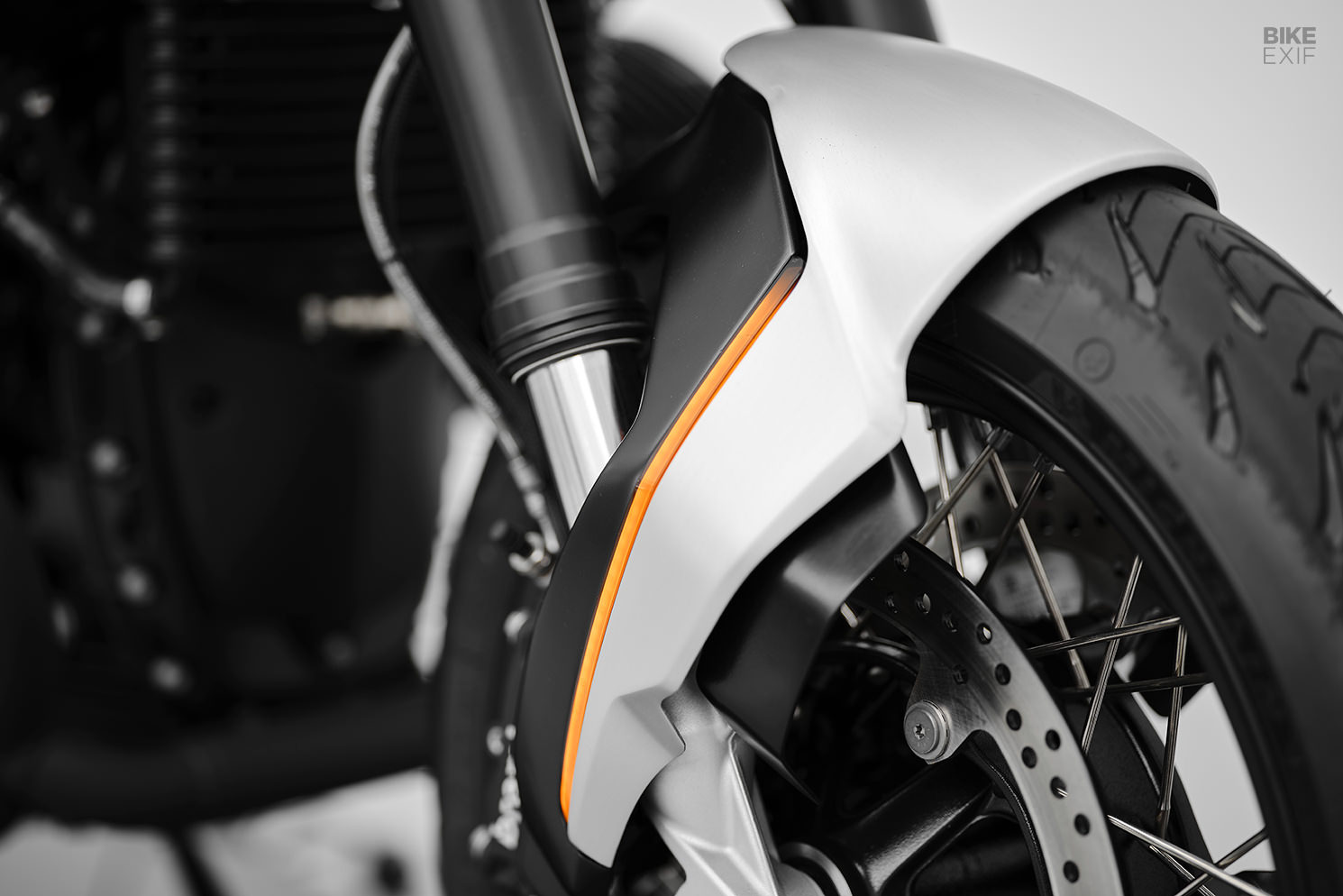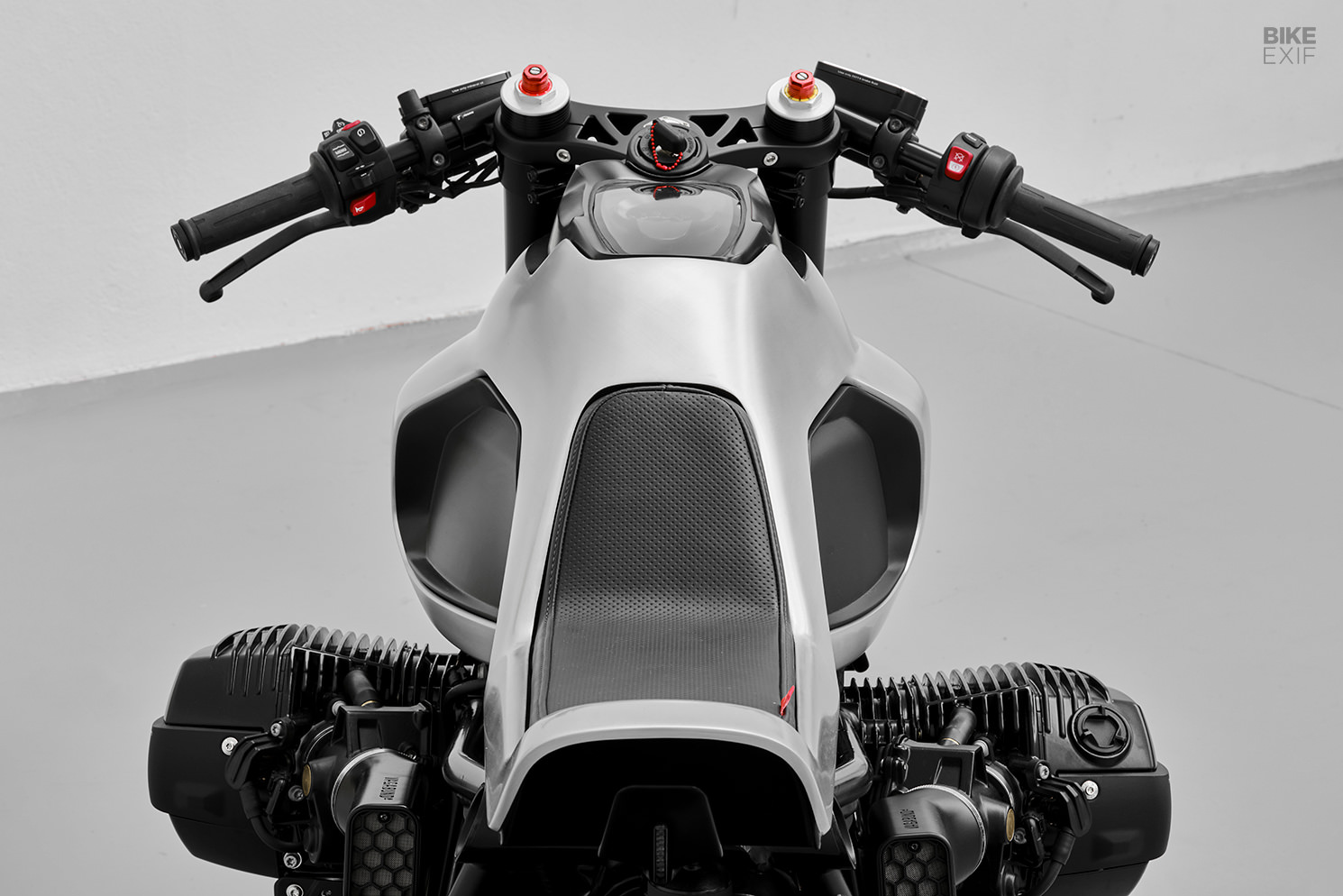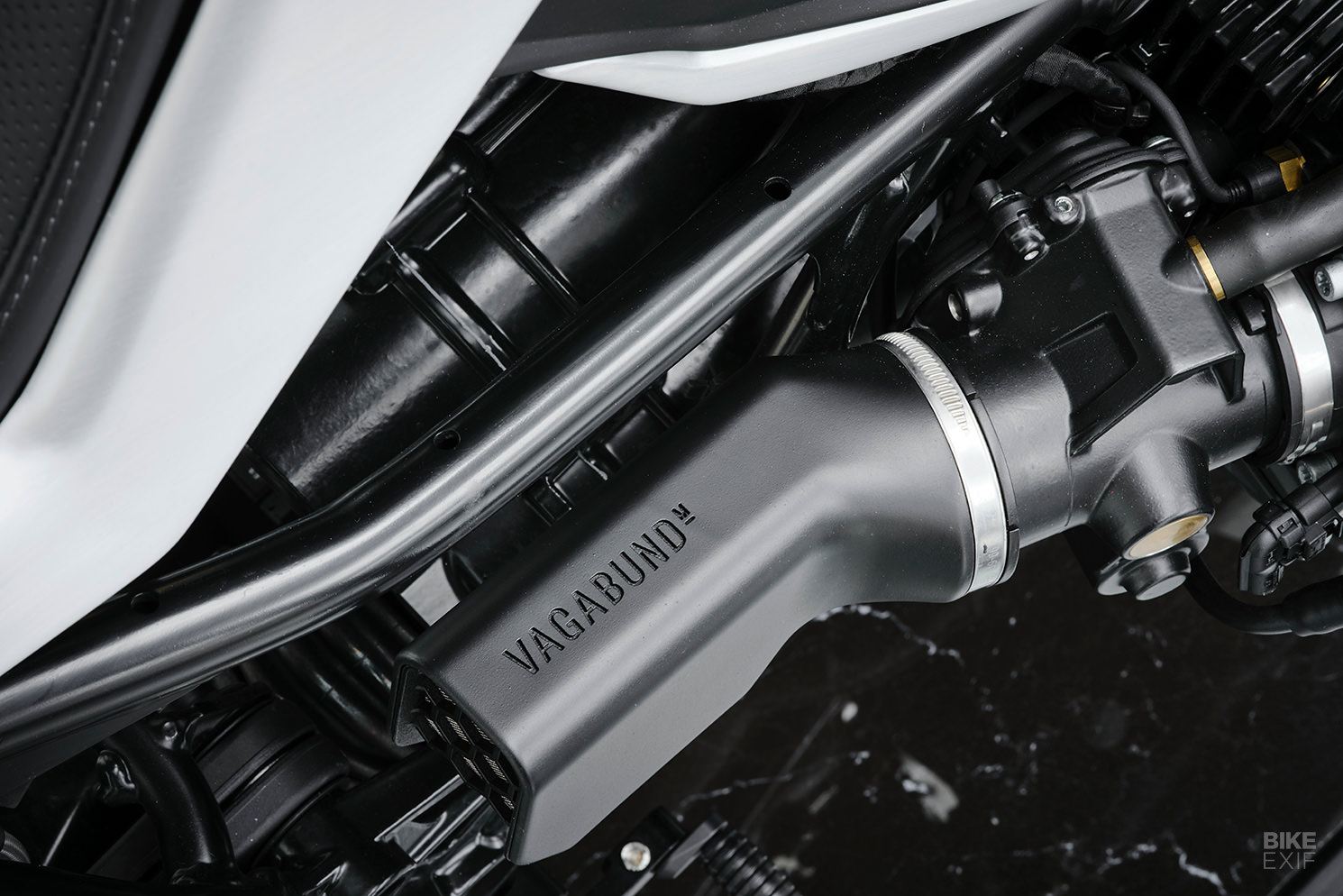
Sometimes we throw a leg over the saddle to get away from it all, but there are plenty of times when it’s handy to have your cell phone within reach while riding. While you shouldn’t be texting or scrolling at intersections, motorcycle phone mounts are great for keeping your maps app front and center, switching tracks and preventing your phone from falling out of a pocket while riding. From personal experience, the right motorcycle phone mount is cheaper than an unplanned upgrade.
There are plenty of mounts on the market, and choosing the right one comes down to a lot more than price. Consider what you ride, and how you ride it. Look at what sort of mounting locations work on your bike, and what level of protection and convenience you can live with. Different mounts work better in different scenarios, and the following phone holders from Quad Lock, Peak Design and Freakmount are some of our favorites for all the ways we ride.

Peak Design Handlebar Mount “Radical gear for the detail-obsessed,” Peak Design’s website reads, and even before bolting this slick handlebar mount up, it’s apparent this is a well-thought-out piece. Versatile and boasting one of the best locking mechanisms we’ve tested, the Peak Design handlebar mount is one of our new favorites for everyday riding.
Peak’s system is similar to many other handlebar mounts on the market, utilizing a bar clamp, swiveling joints and a proprietary phone case, but it’s in the execution that this mount shines. Nearly the whole assembly is made from nicely machined aluminum, and the swivel joints use meshing teeth to provide 24 different positions the mount can be locked into. Installation is like any other bar-mounted accessory, and the single-bolt bar clamp took just a minute to install.

The one thing you have to know about this mount is how simple the mechanism is. It uses a combination of neodymium magnets and mechanical locking tabs to secure the phone. All you have to do is set your phone against the mount and apply slight pressure, and boom, it’s locked in. Squeeze a button on the side of the mounting head, and the locking tabs release the phone. Compared to all the motorcycle phone mounts I’ve used, this mechanism is by far and away the easiest and quickest, and I never doubted its grip on my iPhone.

Phone cases can be problematic with these kinds of mounts, because how often do you really want to be swapping your case? Peak Design’s case isn’t bad though. It looks like any other case you might use and provides ample protection. It also works with most big-name MagSafe chargers as well. The case side of the locking mechanism isn’t intrusive at all, and you can add a loop on the back, or upgrade to a tougher polycarbonate case.
Peak Design’s mount is almost perfect, but I wish the built-in vibration dampener was a little tighter. It just feels a little loose, but this really isn’t much of a factor while you’re riding, and overall, I’m just glad the vibration dampener comes standard.

The Peak Design handlebar mount is hard to beat for everyday riding on a cruiser bike, especially one without built-in nav. It’s super simple to use, sturdy, smart looking and works with Peak’s line of MagSafe lifestyle accessories, including their mini tripod, wireless charging stand and more. To get you rolling, the handlebar mount sells for $99.95, and the standard case is $39.95. [Peak Design]

Freakmount Billet ADV bikes look good with added functional accessories, but for many customs and cruisers, a motorcycle phone mount isn’t exactly an aesthetically pleasing addition. Designed to be unobtrusive and simple, the Freakmount Billet is a sweet little spring-loaded clamp that latches onto your gas tank with super strong magnets.
Right out of the box, the Freakmount is a pretty sweet piece. The whole thing is billet aluminum, and the spring mechanism is stout. Six N52 neodymium magnets are housed in the circular mounting surface on the back of the Freakmount, and these things are strong! Simply pull the spring-loaded clamp apart and slide your phone in. Set it on the tank, and you’re in business.

I know, you’re suspicious about a magnet holding a $900 phone to your tank, and so was I. Be sure ‘Track my iPhone’ is on, right? But I can assure you, this mount won my confidence. Stuck onto a Sporty tank, I’ve hit the roughest roads you’d want to run on street tires, broke into triple-digit speeds and thrown every bit of whacky maneuvering I could at this mount, and it never budged.
Having read some reviews where people claimed the Freakmount shifted or spun while riding, I applied some painter’s tape reference marks and tried to find the limit. I’ve shifted the mount away from the center of the phone, and even placed it on more rounded sections of the tank, and had no issues. I thought I’d prevail by hitting the single track with the Freakmount stuck to the side of my TW200 fuel tank. But even then, it held.

The only thing I questioned on the Freakmount is vibration. The mount isn’t dampened like the Quad Lock or Peak Design, and vibration is what can kill cameras on certain phones. The Sporty I’ve used the Freakmount on has a rubber-mounted engine, and it’s a pretty tame ride. That being said, I couldn’t find any instances of this happening with the Freakmount, and my iPhone is perfectly fine.
Naturally, there are a few things you want to consider before you hit ‘add to cart.’ It should go without saying, but this mount is obviously not for you if your fuel tank is made of non-ferrous materials. Plastic, titanium and aluminum fuel tanks need not apply. It’s probably best if you have some sort of flat-ish surface on your tank to put this thing, and preferably somewhere within easy sight. Also, if you care about your paint, you’re going to want to keep both surfaces clean to avoid scratches.
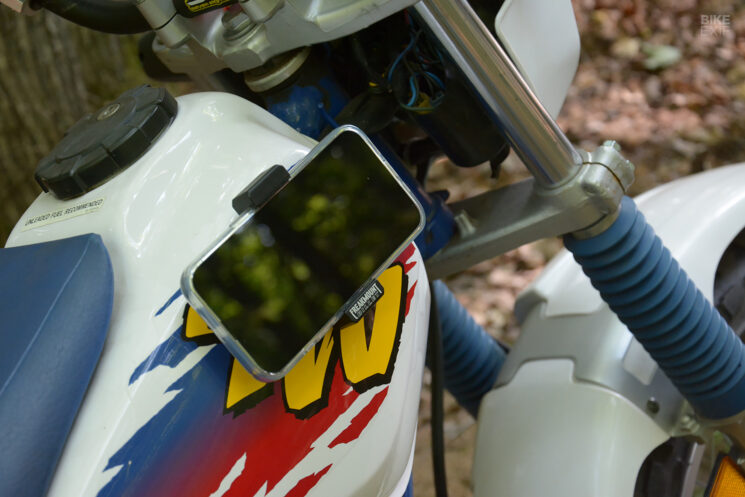
The Freakmount won me over, and it’s a great fit for anyone with a Harley-Davidson or other steel-tank cruiser who doesn’t want to fuss around with an unsightly mount. After you unbox, I’d add a dab of thread locker where the mounting pad attaches to the clamp, just in case, and hit the road. The Freakmount Billet sells for $49.00, which feels like a bargain for the build quality. [Freakmount]

Quad Lock Handlebar Mount Quad Lock has been in the business for many years, and their simple and rugged mount can be used on everything from your motorcycle, to your car, fishing boat, golf bag and even your helicopter. That’s a redeeming quality for a system that forces you to use a proprietary phone case, which is only available in black.
The heart of the Quad Lock is a circular, dual-stage locking mechanism with the receiving end built into the phone case. Locking it in is a press-and-turn sort of affair, and removal is the opposite while pressing a locking tab.
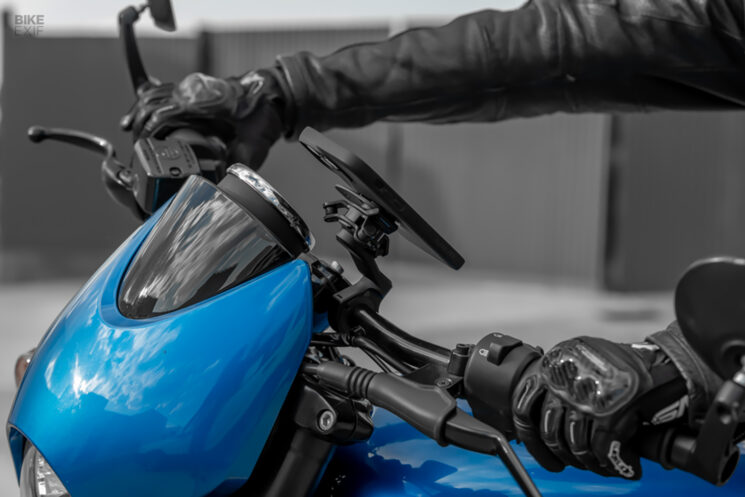
Quad Lock’s standard handlebar mount is made from glass-filled nylon, plastic really, but it’s a rugged piece. I dropped my Honda 450 at least 10 times in Moab, Utah, with my phone in the standard Quad Lock and had no issues. If you’re plastic-averse, you can upgrade to the Pro model, which is made from CNC-cut aluminum.
Quad Lock is one of the more secure options on the market, in my opinion, but there are a few other huge pros to this mount out there in the real world. For one, it’s super universal and works with all of Quad’s other sports and lifestyle products. It’s also nice that you can modify it with other bits and different colored pieces, and the weather-proof phone poncho gave me peace of mind while riding in the rain and dusty conditions.

If you’re buying a Quad Lock, you NEED to add the vibration dampener to your order. Equipped with rubber isolators, this piece prevents vibration damage to your phone’s camera, and it’s the best dampener I’ve used. It feels secure and doesn’t wobble around, and I wish Quad would make this a standard part of the mount. If you don’t add the vibration dampener, there’s a good chance you’ll damage your iPhone—check the small number of one-star reviews for proof.
My only gripe with the Quad Lock is that the mechanism is a bit more temperamental than others. If you don’t position your phone square to the mount, it won’t twist in right. The twisting motion also can interfere with cables on your bars, and my phone always hits my front brake line when I’m snapping my phone back in. And if you really want to split hairs, the case side of the lock is just a hair bulky.

Most everything that I don’t like about the mount can be attributed to its level of security, and for this motorcycle phone mount, that’s the bottom line. While it’s not as quick to use as other mounts, it’s the one I’m using for rough riding on dual-sport motorcycles and ADV bikes. For my setup, the Quad Lock will set you back $29.99 for the case, $25 for the poncho, $69.99 for the standard handlebar mount and $19.99 for the vibration dampener, don’t forget that part! [Quad Lock]
from Bike EXIF https://ift.tt/eg1BSrC















